Abstract
A limiting factor in realizing the full potential of electronic medical records (EMR) is physician reluctance to use these applications. There have been very few formal usability studies of experienced physician users of EMRs in routine clinical use. We distributed the Questionnaire for User Interaction Satisfaction (QUIS) to 75 primary care physicians who routinely use the Brigham and Women's Integrated Computing System (BICS). BICS scored highest in the area of screen design and lowest in the area of system capability. Overall user satisfaction was most highly correlated with screen design and layout, and surprisingly not with system response time. Human-computer interaction studies can help focus our design efforts as we strive to increase clinician usage of information technology.
Full text
PDF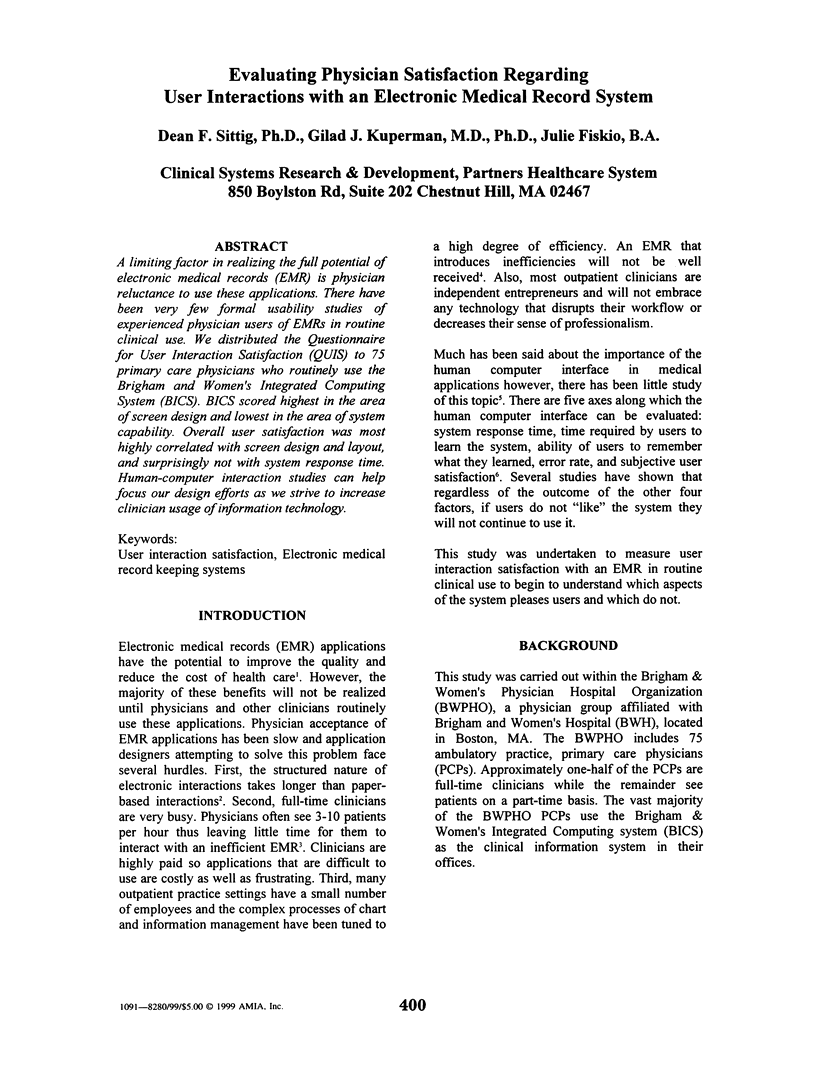
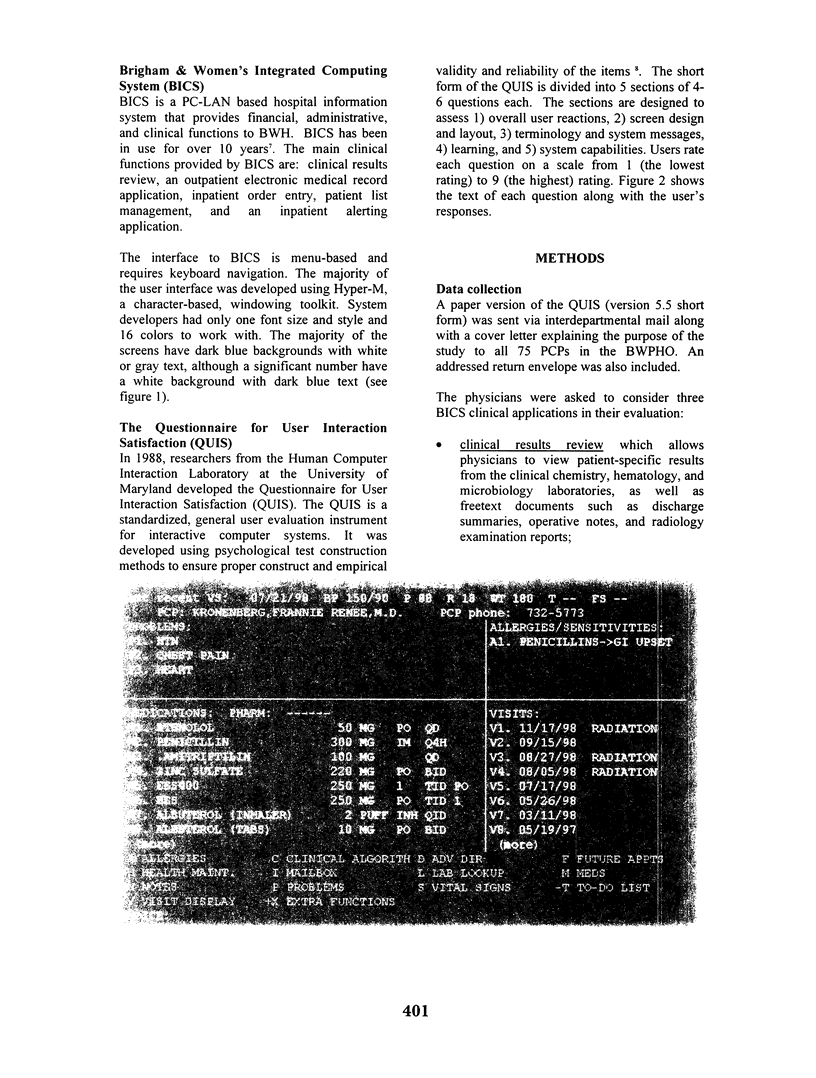
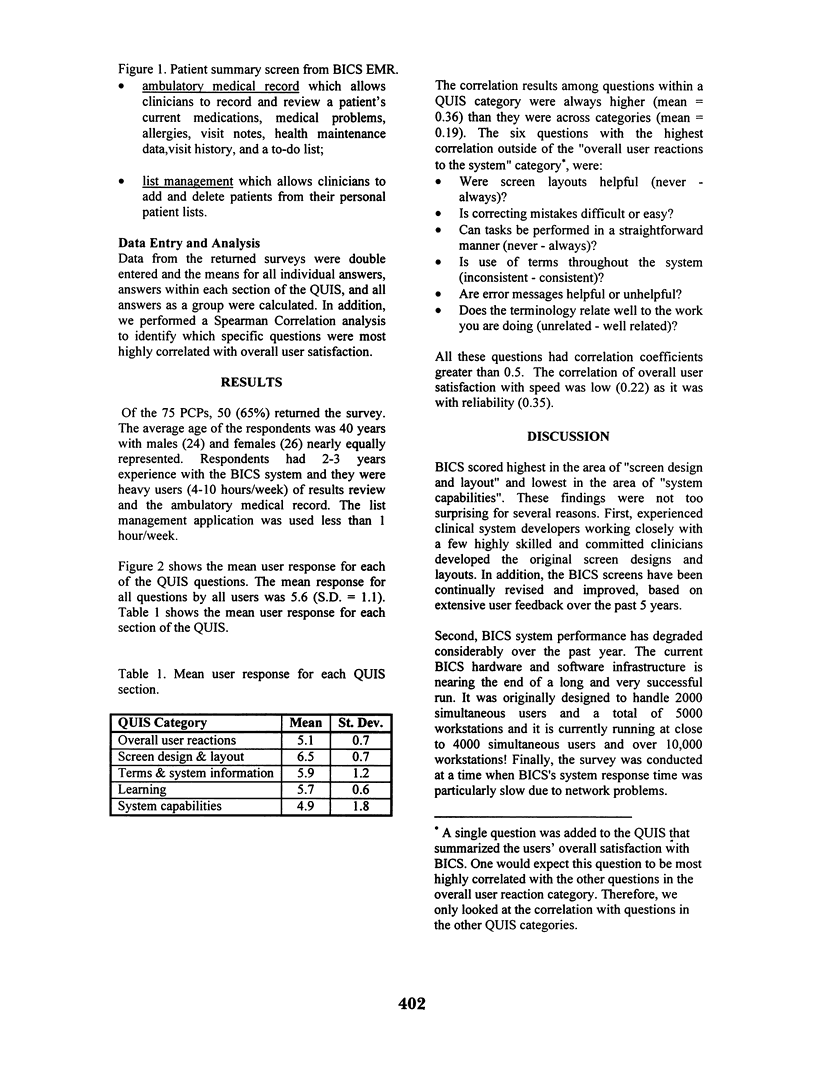
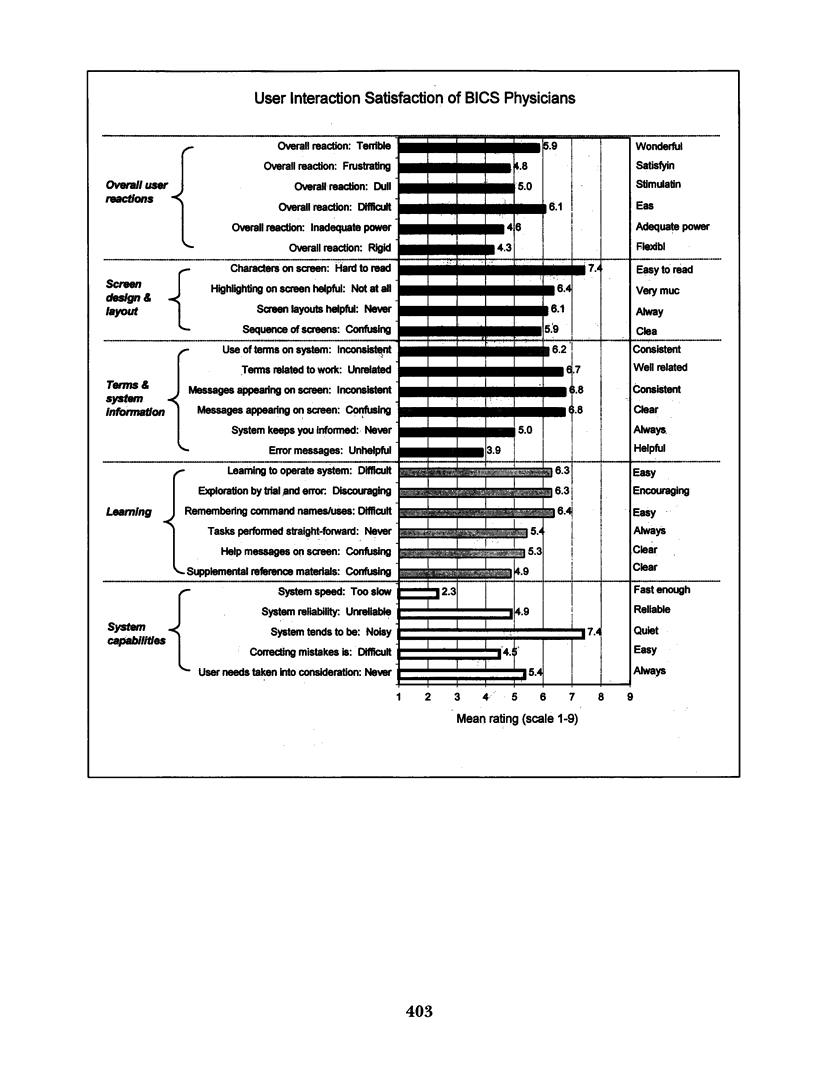
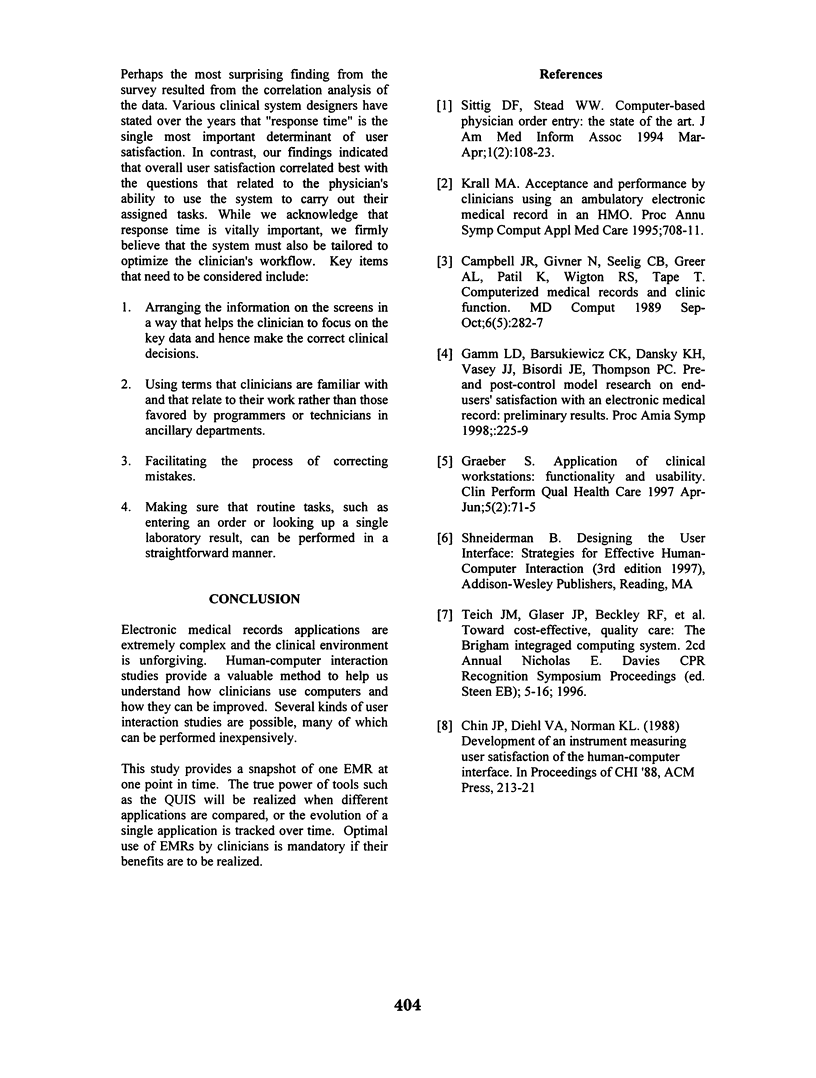
Selected References
These references are in PubMed. This may not be the complete list of references from this article.
- Campbell J. R., Givner N., Seelig C. B., Greer A. L., Patil K., Wigton R. S., Tape T. Computerized medical records and clinic function. MD Comput. 1989 Sep-Oct;6(5):282–287. [PubMed] [Google Scholar]
- Gamm L. D., Barsukiewicz C. K., Dansky K. H., Vasey J. J., Bisordi J. E., Thompson P. C. Pre- and post-control model research on end-users' satisfaction with an electronic medical record: preliminary results. Proc AMIA Symp. 1998:225–229. [PMC free article] [PubMed] [Google Scholar]
- Krall M. A. Acceptance and performance by clinicians using an ambulatory electronic medical record in an HMO. Proc Annu Symp Comput Appl Med Care. 1995:708–711. [PMC free article] [PubMed] [Google Scholar]
- Sittig D. F., Stead W. W. Computer-based physician order entry: the state of the art. J Am Med Inform Assoc. 1994 Mar-Apr;1(2):108–123. doi: 10.1136/jamia.1994.95236142. [DOI] [PMC free article] [PubMed] [Google Scholar]


